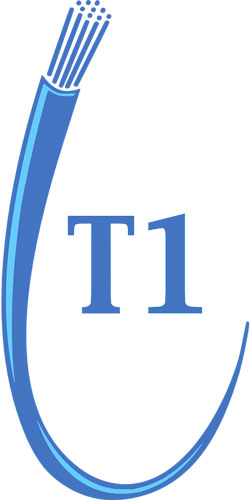By: John Shepler
With today’s advanced technology like gigabit fiber optic and cable broadband, discussing twisted copper pair lines for WAN networking or Internet access might seem outdated. However, the traditional T1 line is still used today. The question is, why would anyone choose this older technology?
 Who Needs a T1 Line?
Who Needs a T1 Line?
Ideally, we would have a wide range of networking options. While this is true in commercial areas of major U.S. cities, the same can’t be said for rural areas. Every provider wants to serve major cities like New York City, Chicago, and Los Angeles. But what about areas beyond city limits?
The issue is that Internet access hasn’t been universally accepted as a basic utility in the U.S. Electricity faced a similar situation in the past, considered a luxury until 1936 when the Rural Electrification Act recognized its importance and made it accessible to all.
Today, broadband Internet, despite its crucial role, is still often seen as optional for businesses and homes. This leaves individuals with limited choices: pay for whatever’s available, rely solely on mobile phones, or use shared options like libraries or free Wi-Fi.
How T1 Fits In
While not exceptionally fast, T1 lines are reliable and function well, even in areas where wireless service is unavailable.
This reliability stems from its original purpose. The T1 Carrier System was designed to carry multiple telephone conversations on a single digital line. Essentially a telephone company invention, it replaced numerous phone lines between offices with a single pair, each carrying 24 simultaneous calls without interference.
As a telephone company standard, T1 used ordinary twisted pair wiring like regular phone service. Repeaters were installed every mile to amplify the signal for long-distance transmission.
With the rise of the internet, local phone companies began offering the already widely used T1 lines as an upgrade from dial-up. Considered broadband in the 1990s, T1 provided a dedicated 1.5 Mbps always-on bandwidth, eliminating competition with other users and busy signals.
T1 Lines Today
Similar to landline phones, T1 lines are still available for businesses in many places. Some companies use them for multiple phone lines connected to a local PBX phone system via ISDN PRI. Additionally, they might have separate T1 lines for internet access or private point-to-point connections between locations.
Over time, T1’s popularity as the primary broadband option has declined due to its limited bandwidth. However, prices, initially high, have dropped significantly, though this trend is reversing in areas phasing out T1 in favor of fiber optic lines and microwave fixed wireless.
Leasing a T1 line provides a stable 1.5 Mbps connection for both upload and download. These lines are highly dependable and easily fixed if problems occur. While this bandwidth might seem low, it’s suitable for small retail or office operations needing credit card processing, email, basic website updates, inventory management, ordering, and occasional browsing.
Point-to-point T1 lines bypass the public internet, avoiding its congestion and security concerns. This setup provides a dedicated, symmetrical link between your locations, effectively extending your network over long distances.
If you have a landline phone or access to one, chances are T1 line service is available in your location.
Alternatives to T1 Lines
Cable broadband is expanding its reach, serving more industrial parks and residential areas. Fiber optic providers are also widening their coverage alongside cellular tower expansion. Fiber optic service prices have decreased with increased availability.
Cellular service and 4G LTE broadband, even 5G in some areas, are now common. Specialized cellular modems designed for computers or Wi-Fi routers offer reasonable connectivity solutions. Providers offer plans with substantial usage limits.
Some rural areas benefit from Wireless Internet Service Providers (WISPs) that serve locations lacking wired connections. WISPs function like large Wi-Fi hotspots, often requiring an outdoor antenna pointed at a tower for connection. These offer relatively high-speed broadband.
In business districts, fixed microwave wireless provides bandwidth and latency similar to fiber, using a small dish on your roof to connect to a provider’s tower. This offers dedicated, reliable high-speed connections similar to but more reliable than WISPs.
Satellite broadband is widely accessible with a clear view of the southern sky and a power source. Offering true broadband, plans cater to most businesses. However, as a shared service, bandwidth depends on simultaneous users. Latency is a factor due to the satellite’s geostationary orbit. Newer high-power, high-throughput satellites have improved the service, making it suitable for many businesses.
Determining the best solution for your needs, whether T1 or fiber/wireless, requires researching available bandwidth service options and pricing for your specific business location.

